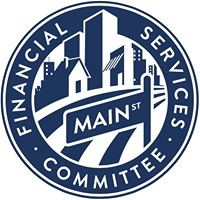The Effect of Regulation on Affordable Multifamily Housing
Washington, DC – (RealEstateRama) — The Housing and Insurance Subcommittee met today to examine the various federal, state and local regulations and policies that affect affordable multifamily housing development.

“Today’s hearing was essential in order to determine the costs of regulation, and barriers preventing affordable multifamily housing development. The lack of development is especially concerning because while we continue to enjoy some of the lowest rates of unemployment in our history, people are having trouble finding affordable housing in areas they are being offered jobs. I want to thank today’s witnesses for coming forward today to share their thoughts on what is holding the housing industry back from developing affordable multifamily housing projects for our growing workforce,” said Subcommittee Chairman Sean Duffy (R-WI).
Key Takeaways
- Housing trends in the United States will dramatically change over the next 25 years as more individuals opt to rent housing rather than become homeowners.
- Multifamily housing development can be subject to a significant array of regulatory costs, including a broad range of fees, standards and other requirements imposed at different stages of the development and construction process.
- When regulatory costs become too expensive, it can hinder development, reduce housing supply, and further exasperate housing affordability problems.
Topline Quotes from Witnesses
“We applaud the Committee for engaging stakeholders to look for innovative ways to reduce regulatory barriers that inhibit multifamily housing development and exacerbate our nation’s affordable housing shortage. Policymakers at all levels of government must recognize that addressing housing needs—at all price points– requires a partnership between government and the private sector.” – Sue Ansel, President and Chief Executive Officer, Gables Residential, on behalf of the National Multifamily Housing Council
“…[m]andates at all levels of government have expanded beyond basic safety and soundness considerations and morphed into complicated compliance regimes, expensive code changes, energy efficiency mandates and/or restrictive land use policies. The compliance costs and fees associated with such policies are exacerbating the difficulty of providing safe, decent, and affordable rental housing.” – Steven E. Lawson, Chairman, The Lawson Companies, on behalf of the National Association of Home Builders
“The apartment industry can be a robust economic engine that provides high-quality, affordable housing and lasting job growth. However, the ability of our sector to deliver these benefits depends on collaboration and partnership at all levels of government… Support from policymakers, along with educational and planning tools, can help promote the acceptance of apartments and demonstrate the benefits of multifamily development.” – James H. Schloemer, Chief Executive Officer, Continental Properties Company, Inc.










